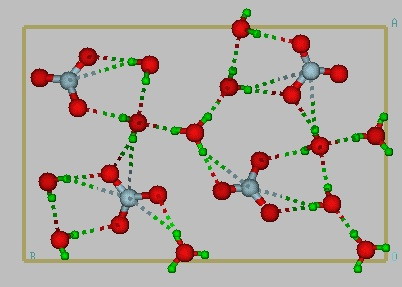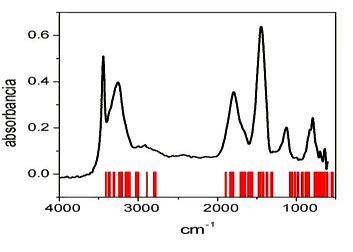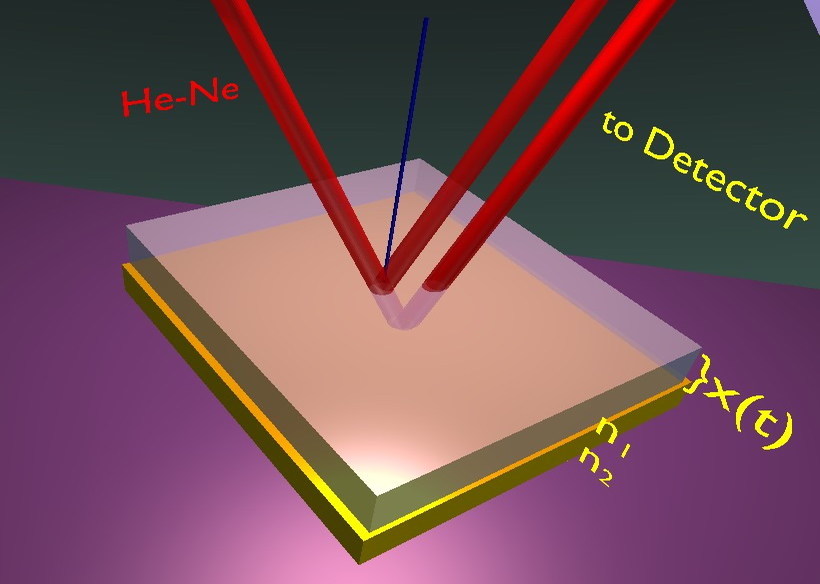Research lines:
Our main lines of research are focused on the design and study of laboratory and theoretical models for astrophysical and atmospheric systems. Such models are required for the interpretation of observational data. We work on four objectives:
1) Interstellar Dust and Ice and Prebiotic Molecules
The formation of complex organic molecules and, in particular, prebiotic species requires reactions in condensed phases. Condensed matter in the Universe is present in the form of dust grains and ice particles in early stages of stellar evolution, subjected to an intense UV bombardment. In our lab, the interstellar medium (ISM) environment is simulated by electron and UV bombardment of very cold samples of carbonaceous matter, both by itself and with adsorbed prebiotic molecules. We investigate the subsistence and reactivity of these molecules under such conditions.
2) Ices in Outer Solar System Objects
The observational data on these distant objects is scarce, but the New Horizons mission is providing new and exciting evidence on objects such as Pluto and Charon. Our aim is to replicate the surface of these objects in the lab and to study their spectroscopic properties.
3) Ions and Particles Generated in Cold Plasmas
The detection in space of protonated ions of noble gases and O2 represents a serious challenge. We are searching in the lab for favorable conditions to generate this type of ions, which could provide a clue for their identification in the ISM. We have developed a powerful technique that uses cold plasmas of small hydrocarbons to generate carbonaceous particles with properties similar to those of the dust grains produced in the last stages of evolution of carbon rich stars. We expect that a detailed diagnostics of these plasmas will reveal mechanisms of dust production relevant for the ISM.
4) Atmospheric Particles
Mineral dust is in large proportion formed by silicate particles created by erosion of the soils. These particles are studied at various conditions of temperature, humidity and with adsorbed molecules, using mainly infrared spectroscopy, covering the whole IR range to better understand the samples and their possible alterations. Aerosols containing iodinated compounds are abundant on marine environments. Some chemical reactions of iodine oxides with nitrogen oxides NOx are being studied in collaboration with scientists at the Toledo campus of the University of Castilla-La Mancha, funded by a MINECO project.

Collaborations with other groups:
We keep several active collaborations with different groups from Spanish, European and overseas Institutions. Currently we are involved in three collaborative projects or networks, namely: an ERC Synergy Grant of the EU (“Nanocosmos”); an i-link project with the Institute of Low Temperature Physics of the University of Hokkaido at Sapporo (Japan) (“Astrophysical ices in the lab”), and in a “Red de Excelencia” network, with groups at INTA-CSIC, UPV and IAA (see below).
Some of the groups with which we have active collaborations are:
- Prof. Hinrich Grothe, Vienna Technical University (Austria)
- Prof. Nevin Uras-Aytemiz, Karabuk University (Turkey)
- Prof. Naoki Watanabe, Institute of Low Temperature Science, Hokkaido University, Sapporo (Japan)
- Prof. Harold Linnartz, Leiden Universiteit (The Netherlands)
- Dr. Guillermo Muñoz Caro, Centro de Astrobiología, INTA-CSIC, Madrid
- Dr. Miguel Angel Satorre, Universidad Politécnica de Valencia, UPV; Alcoi
- Drs. Olga Muñoz and Fernando Moreno, Instituto de Astrofísica de Andalucía, IAA, Granada
- Dra. Teresa Baeza, Universidad de Castilla-La Mancha
- Departamento de Química Física de la Universidad Complutense, Unidad Asociada CSIC-UCM

Experimental Setup:
This picture shows our chamber where ice crystals are formed and studied by IR spectroscopy. We can vary the temperature between 6K and 296K, and pressure can be as low as 10
-8 mbar :








